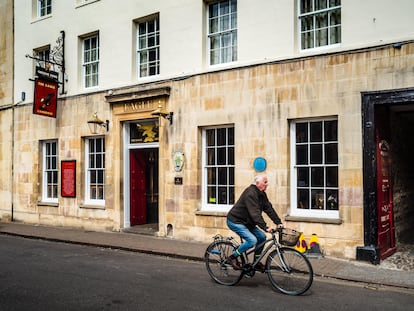Santa Rosalía, the French city in the middle of the Mexican desert
Centuries ago copper mines attracted foreign investors and today, almost in the middle of the Baja California peninsula, stands a town that seems frozen in time
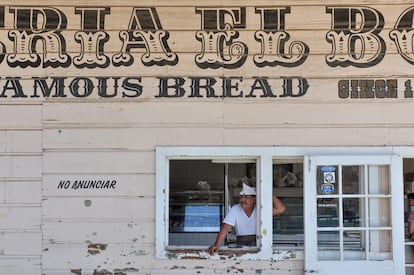
Santa Rosalía is another world within another world. A plot twist. As such, by excess or by opposition, it ends up reducing the fantasy of the rest of the Mexican peninsula of Baja California. It lowers the dreamland of the desert landscape, full of exotic — and in some cases unique — flora; of the boojum trees, which sometimes grow in contorted sets to the ground, or tall and slender into the sky, like a blade of mutant grass in a garden of giants; of the cardons, a species of enormous cactus; of the tallest and longest-lived cactus in the world, some of which have existed in this corner of the planet for centuries; of the roadrunners, which here are not cartoons but real animals, extremely agile birds that can run at speeds of more than 20 kilometers per hour (12.4 mph), and of rattlesnakes, pronghorn, whales and a long etcetera of fauna that, with luck, can be seen if you travel down the Transpeninsular Highway from Tijuana, or up from La Paz or Los Cabos. This peninsula is one of the regions of Mexico that takes the greatest care of its nature, with some 20 protected natural areas including biosphere reserves, national parks, flora and fauna protection areas, and sanctuaries.
But Santa Rosalía is not that. It sucks us out of this outer space and returns us to a reality that is at least more urban, but no less surreal. Because although Santa Rosalía propels us out of this cosmos that is the peninsula, it has something magical, something strange within the strangeness. Something that attracts attention and that is also a little extraterrestrial in its own way. Why wouldn’t a town of French architecture in the middle of the Mexican desert catch the eye? Isn’t a church attributed to Gustave Eiffel so far from Paris a little odd?
This small town of just over 14,000 inhabitants, declared a historic monument in the early 1980s, is reached by leaving behind the Las Tres Virgenes volcano, a few hours after crossing the border between the states of Baja California and Baja California Sur. The latter, according to official data, has the lowest population density of all the states in Mexico. Fewer people live in the entire territory, for example, than in the northern city of Tijuana. These official data also state that almost 2% of the population speaks an Indigenous language, that a little more than 3% is recognized as Afro-Mexican or Afro-descendant, and that, of the foreign residents in the area, the majority are Americans or Canadians.
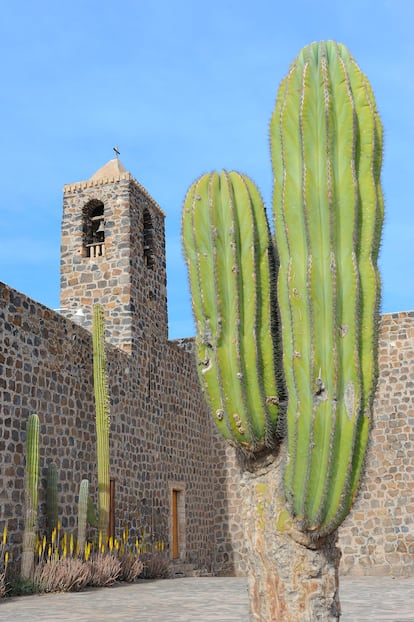
So, apparently, little to do with the French. So why is Santa Rosalía like this? The answer lies in its succulent copper deposits, which were discovered by chance by a rancher at the end of the 19th century. The man was looking for a shortcut to reach the coast more quickly and he came across a hill covered in green clods of earth. This is the story told by Juan Manuel Romero Gil in El Boleo: Santa Rosalía, Baja California Sur, 1885-1954. The book goes on to explain how the news spread and soon attracted a group of miners of German origin who, with their thirst for wealth, exhausted the surface layer of the deposit in just four years and left. But others began to come and open small mines. In 1885, bankers from the House of Rothschild — European capitalists of Jewish-German origin — paid 12 million francs and with that founded the Compagnie du Boléo (the El Boleo Company). Thus, in this mostly uninhabited and arid region, they began to forge a mining colony. Initially, they employed many workers of Yaqui origin, an Indigenous population of Sonora, who spent 10-hour days in the mines. The company signed a contract with the Mexican government of Porfirio Díaz to establish a minimum of “sixteen foreign families and fifty Mexican families,” writes Romero Gil. Then began the construction of houses, a railroad, water pipes, and other infrastructure.
Now, walking through the center of the city is like making a leap in geography and in time, because it is reminiscent of the France of centuries ago or New Orleans, which also features a mixture of French and Spanish heritage.

Many of the houses in Santa Rosalía are still made of wooden slats, in light, pastel colors, with a porch to shelter from the sun and triangular roofs. In the streets are taco stands, tostadas and seafood cocktails, hot dogs, cafes, and a very particular bakery: El Boleo, where on the wall of the entrance a phrase in English provides a spoiler or statement of intent: “World’s famous bread since 1901.” What is striking is that, although the text is in English, the coveted bread is French, or at least it was in its early days when the mining company founded the bakery, because the pastries were made with ingredients imported from France.
Although perhaps the most curious aspect of downtown is the Santa Bárbara Church, whose entrance bears a plaque announcing that it was “designed in 1884 by Gustave Eiffel, built in 1887. Exhibited in Paris in 1889 together with the Eiffel Tower.” The building, with an iron structure that is very reminiscent of the famous Paris landmark, is attributed to the French engineer, although this has not been proven. But be that as it may, for its uniqueness alone it is worth a visit. To complete the day, you can take guided tours of the mines and contemplate the sea on a walk along the town’s harbor.
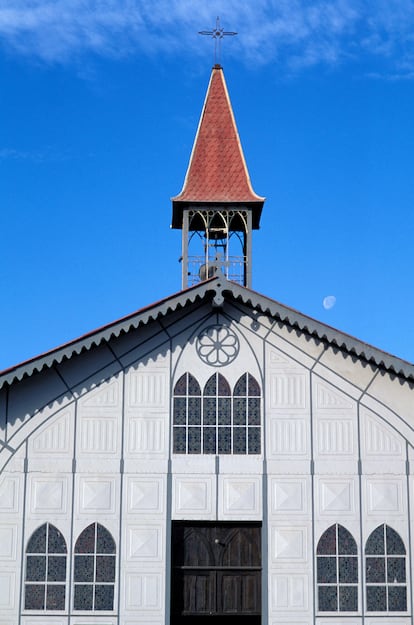
Santa Rosalía belongs to the municipality of Mulegé, which is mostly known for its spectacular beaches a little further south in Bahía Concepción. Of these, two stand out: Coyote and Requesón. There, white sands, crystalline waters and fish coexist with a semi-desert landscape of cactus and other similar vegetation, including mangroves. Although these attract plenty of tourists, there is a welcoming calmness.
Visitors can camp on the beaches for in a motorhome for around $10 a day, as many retired Americans and Canadians do, or in tents under the palapas. Spending a night here and contemplating the virgin landscapes under a sky full of stars is a fantasy, but the most magical thing is that it is a real one.
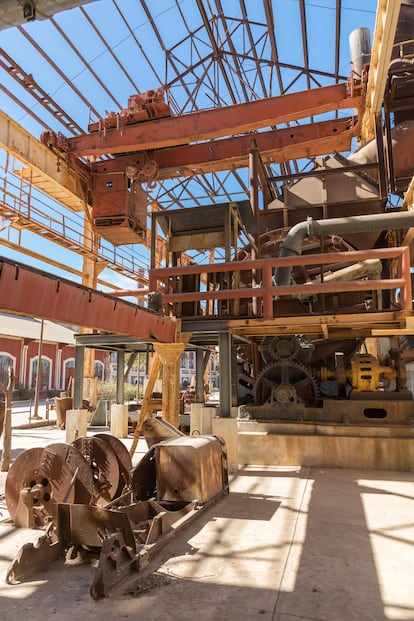
Sign up for our weekly newsletter to get more English-language news coverage from EL PAÍS USA Edition
Tu suscripción se está usando en otro dispositivo
¿Quieres añadir otro usuario a tu suscripción?
Si continúas leyendo en este dispositivo, no se podrá leer en el otro.
FlechaTu suscripción se está usando en otro dispositivo y solo puedes acceder a EL PAÍS desde un dispositivo a la vez.
Si quieres compartir tu cuenta, cambia tu suscripción a la modalidad Premium, así podrás añadir otro usuario. Cada uno accederá con su propia cuenta de email, lo que os permitirá personalizar vuestra experiencia en EL PAÍS.
¿Tienes una suscripción de empresa? Accede aquí para contratar más cuentas.
En el caso de no saber quién está usando tu cuenta, te recomendamos cambiar tu contraseña aquí.
Si decides continuar compartiendo tu cuenta, este mensaje se mostrará en tu dispositivo y en el de la otra persona que está usando tu cuenta de forma indefinida, afectando a tu experiencia de lectura. Puedes consultar aquí los términos y condiciones de la suscripción digital.
More information
Archived In
Últimas noticias
Maps of the US attack on Venezuela: Targets, airspace and deployed fleet
Venezuelans in exile: ‘This could be the end of a very dark chapter for Venezuela, but also the beginning of a time of uncertainty’
Key points of the military attack on Venezuela: Early morning bombings and a ‘captured’ president
World reactions to the US strikes on Venezuela
Most viewed
- Alain Aspect, Nobel laureate in physics: ‘Einstein was so smart that he would have had to recognize quantum entanglement’
- David King, chemist: ‘There are scientists studying how to cool the planet; nobody should stop these experiments from happening’
- Mexico completes its trade shift with the entry into force of tariffs on China and countries without trade agreements
- Reinhard Genzel, Nobel laureate in physics: ‘One-minute videos will never give you the truth’
- Oona Chaplin: ‘I told James Cameron that I was living in a treehouse and starting a permaculture project with a friend’
